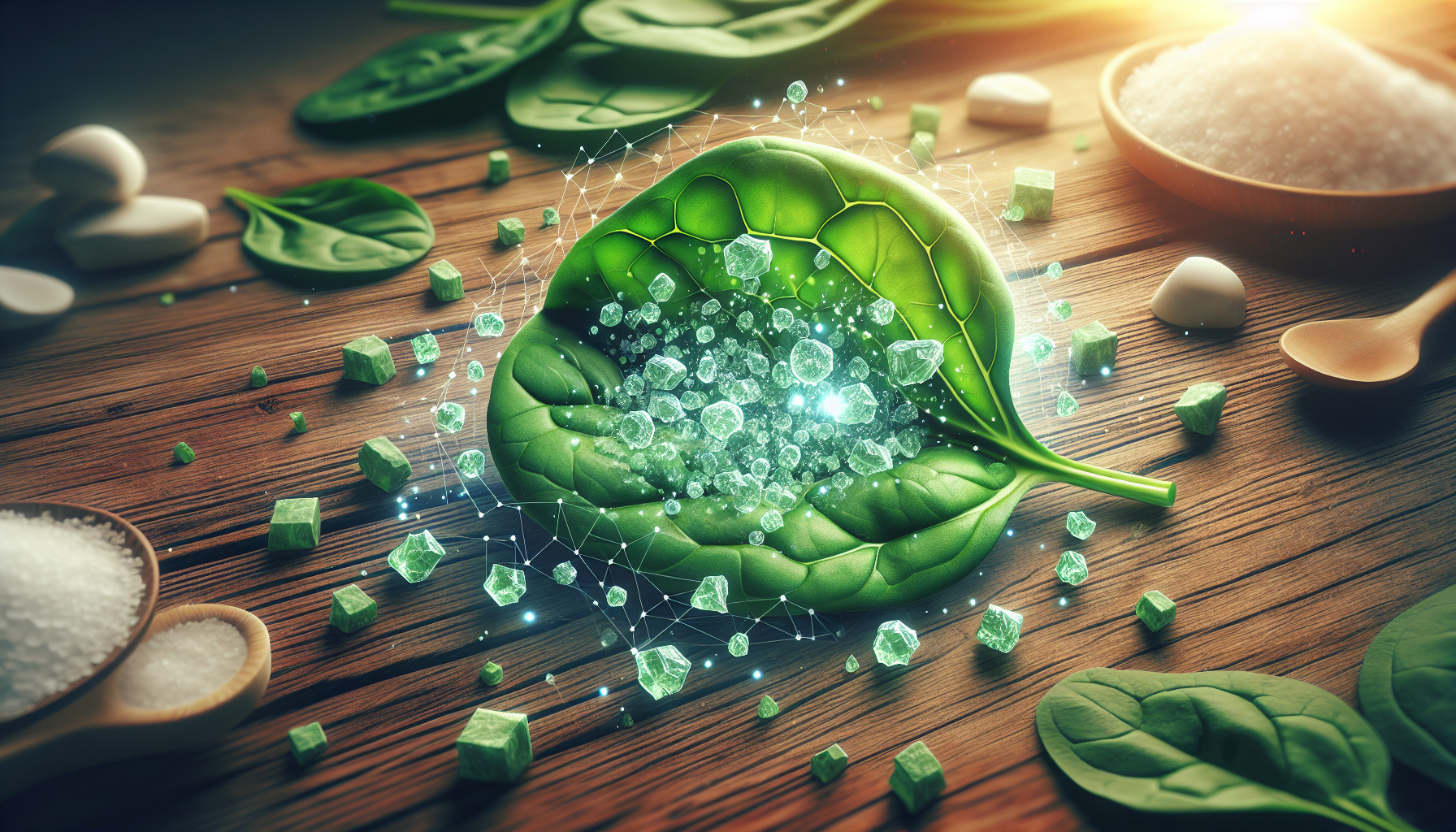Have you ever wondered how the foods you eat might affect your body beyond just calories and nutrition?
The Connection Between Uric Acid and Oxalates
If you’ve ever faced issues with uric acid, you might be familiar with the discomfort it can bring. But what about oxalates? They often don’t get the same attention, yet they play a crucial role in the world of uric acid disorders. It’s fascinating how different compounds in our food can take part in such complex biological reactions, isn’t it?
What Are Uric Acid Disorders?
Uric acid disorders, primarily characterized by elevated uric acid levels in the blood, are commonly associated with conditions like gout. Gout, in particular, can lead to painful joint inflammation, usually in the big toe. But what causes these elevated levels?
Essentially, uric acid is a waste product formed when the body breaks down purines, which are substances found in certain foods and drinks. Some other factors like genetics, diet, and hydration levels also play a significant role.
The Role of Diet
Your diet affects uric acid levels more than you might think. Foods high in purines—think red meats, certain seafood, and alcohol—can increase uric acid production. However, the focus here isn’t just on purines but on oxalates as well.
What Are Oxalates?
Oxalates are naturally occurring compounds found in many plants. While they are often overlooked, they can affect how your body processes uric acid. You’ll generally find oxalates in foods like spinach, beet greens, nuts, chocolate, and even some fruits.
Good vs. Bad Oxalates
It’s important to differentiate between the sources of oxalates. Some foods contain soluble oxalates, which can combine with calcium and form soluble compounds, while insoluble oxalates may combine with calcium to form kidney stones. So, if certain oxalate-rich foods are part of your diet, it’s worth considering how they interact with uric acid.
How Do Oxalates Affect Uric Acid Levels?
This is where things get a bit tricky. When you consume foods high in oxalates, they can influence the way your body metabolizes uric acid. Instead of working independently, these compounds can have a combined effect, impacting your overall health and potentially exacerbating conditions related to uric acid.
The Interaction Explained
When oxalates enter your system, they can bind with calcium and create insoluble calcium oxalate. This reaction impacts calcium levels in your bloodstream and, in turn, may influence uric acid metabolism. Lower calcium levels can promote an increase in uric acid levels, which means that eating oxalate-rich foods could aggravate conditions like gout.
Table: Common Foods High in Oxalates and Purines
| Food Item | Oxalate Content | Purine Content |
|---|---|---|
| Spinach | High | Moderate |
| Almonds | Moderate | Low |
| Dark Chocolate | High | Low |
| Red Meat | Low | High |
| Shellfish | Low | High |
| Strawberries | Low | Low |
| Beets | High | Low |
| Cauliflower | Moderate | Low |
Identifying Symptoms of Uric Acid Disorders
Perhaps you’re feeling symptoms related to your uric acid levels, such as joint pain, swelling, or redness. That discomfort can significantly affect your quality of life.
Risks Involved
The symptoms can escalate into acute attacks of gout, leading to unbearable pain. Chronic high levels of uric acid can also lead to kidney stones or even kidney disease. It’s crucial to pay attention to how your body reacts to different foods.
Diagnosing Uric Acid Disorders
If you suspect an issue, your healthcare provider will typically run a blood test to measure uric acid levels. They might also conduct urine tests to check for excess uric acid being excreted in your urine.
Table: Uric Acid Levels
| Measurement Type | Normal Level | High Level |
|---|---|---|
| Blood Uric Acid (mg/dL) | 3.5 – 7.2 | Above 7.2 |
| Urine Uric Acid (mg/day) | 250 – 750 | Above 750 |
The Role of Hydration
Hydration plays a pivotal role in managing uric acid levels. Water helps to dilute uric acid in the bloodstream, promoting its elimination through urine. If you’re not drinking enough water, your body may struggle to get rid of uric acid, leading to higher levels and potential disorders.
How Much Water Do You Need?
Generally, it’s recommended to consume at least eight 8-ounce glasses of water a day. However, if you’re prone to uric acid disorders, you might want to increase your water intake further.
Dietary Changes to Consider
Now that you understand this connection, let’s discuss some practical dietary changes. You can keep your uric acid levels in check while enjoying your meals and keeping oxalates in mind.
Reducing Oxalates
If you suspect that oxalates are affecting you, consider reducing high-oxalate foods. Instead, focus on incorporating low-oxalate foods like bananas, cauliflower, and watermelon. Remember that balance is key; you don’t need to eliminate oxalates entirely but rather manage your intake.
Inclusion of Low-Purine Foods
In tandem with managing oxalate intake, try to focus on foods that are low in purines. Foods like whole grains, fruits, and low-fat dairy can provide the nutrients you need without exacerbating uric acid issues.

Supplement Your Diet
While a balanced diet is essential, supplements can also offer additional support. Vitamin C, for example, has shown potential in reducing uric acid levels, helping you regulate what’s happening in your body.
Table: Supplements That May Help
| Supplement | Potential Benefit |
|---|---|
| Vitamin C | May reduce uric acid levels |
| Omega-3 Fatty Acids | Anti-inflammatory effects |
| Cherry Extract | May lower uric acid levels |
| Quercetin | Can reduce inflammation |
Lifestyle Modifications
Diet is only part of the equation. Your overall lifestyle choices matter too.
Maintaining a Healthy Weight
If you’re overweight, losing even a small number of pounds can help ease uric acid levels. Fat tissue produces more uric acid, so by shedding weight through a combination of diet and exercise, you can make a significant impact.
Exercise Regularly
Incorporating regular exercise can lead to weight loss and overall better health. Activities like walking, swimming, or yoga can be beneficial without putting too much strain on your joints.

When to Seek Medical Advice
If you’re experiencing frequent flare-ups or believe oxalates may be affecting your uric acid levels, it’s important to consult a healthcare professional. They can offer tailored advice based on your unique situation.
Treatment Options
Often, doctors might prescribe medications to help you manage uric acid levels, along with advising lifestyle changes. Nonsteroidal anti-inflammatory drugs (NSAIDs) can help mitigate the pain during a gout attack.
Table: Common Medications for Uric Acid Disorders
| Medication | Purpose |
|---|---|
| Allopurinol | Reduces uric acid production |
| Colchicine | Reduces pain and inflammation |
| Probenecid | Helps kidneys remove uric acid |
Recognizing Triggers
We all have certain “trigger” foods that can escalate our symptoms. Maintaining a food diary can help identify any personal triggers, enabling you to make informed decisions about what’s on your plate.
Conclusion
Understanding the role of oxalates in uric acid disorders can be a game-changer. It empowers you to make informed dietary and lifestyle choices that can significantly impact your overall health. By managing what you eat, staying hydrated, and maintaining a healthy lifestyle, you can navigate through uric acid challenges more confidently.
Incorporate these insights into your daily routine, listen to your body, and seek professional advice if necessary. Empower yourself with knowledge, and remember that each meal is an opportunity to nurture your body and soul.




